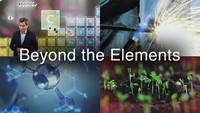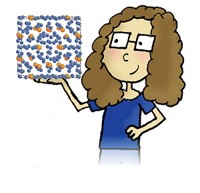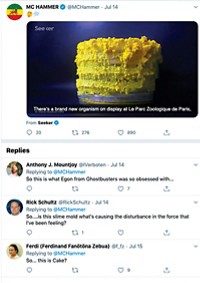Advertisement
Grab your lab coat. Let's get started
Welcome!
Welcome!
Create an account below to get 6 C&EN articles per month, receive newsletters and more - all free.
It seems this is your first time logging in online. Please enter the following information to continue.
As an ACS member you automatically get access to this site. All we need is few more details to create your reading experience.
Not you? Sign in with a different account.
Not you? Sign in with a different account.
ERROR 1
ERROR 1
ERROR 2
ERROR 2
ERROR 2
ERROR 2
ERROR 2
Password and Confirm password must match.
If you have an ACS member number, please enter it here so we can link this account to your membership. (optional)
ERROR 2
ACS values your privacy. By submitting your information, you are gaining access to C&EN and subscribing to our weekly newsletter. We use the information you provide to make your reading experience better, and we will never sell your data to third party members.
Outreach
Newscripts
Punk science album drops; dropping science on the concertgoing crowd
by Carmen Drahl
September 30, 2018
| A version of this story appeared in
Volume 96, Issue 39
For those about to rock

Ready your eardrums, Newscripts readers, because an unholy alliance of science and rock has come to a head. Pop-punk powerhouse Leucine Zipper & the Zinc Fingers, a fixture on the Atlanta science festival circuit, released its debut album, “Atomic Anarchy,” on streaming services and on CD Sept. 1.
The band’s sound calls to mind the Ramones, Joan Jett, Kiss, or Iggy Pop. That is, if those icons wrote songs about enzymes that are suitable for performing in the presence of children. Each band member has a distinctive punk-rock science name. “Mine is X. O. Therm,” explains bass player and chemist Michael Evans, who by day works as Georgia Institute of Technology’s chemistry laboratory coordinator.
Front woman and lyricist Leucine Zipper is the alter ego of molecular immunologist Jennifer Leavey, who develops interdisciplinary science, technology, engineering, and mathematics undergraduate programs at Georgia Tech. She aims to write lyrics that don’t require a science background to enjoy. “But then when you dig deeper, you’ll find that they are about science,” she tells Newscripts. The album’s downloadable companion booklet explains the scientific inspiration for every track.
Track 8, “Entropy,” is a crowd-pleaser at live performances. “At the first science festival where we played that song, we dumped Ping-Pong balls out into the audience,” Evans says. “Just to create a little disorder,” Leavey quips. “We never got those Ping-Pong balls back.”
Entropy also happens to be the inspiration for the album title. “Punk rock has this central concept at its core that’s about not being tied to any sort of rule. It’s about freedom. It’s about not conforming,” Leavey says. “Atomic anarchy is the scientific equivalent of that. Things are just going to go their own way, and that’s what punk rock is about too.”

Stealth outreach at concerts
Advertisement
The band might consider taking its show to Portugal’s NOS Alive rock festival. The three-day event, which draws headliners as famous as Pearl Jam and the Arctic Monkeys, features an afternoon pavilion where scientists can interact with concertgoers. Communications staffers at Portugal’s Gulbenkian Institute of Science (IGC), a center for biological research, established the stand in 2007, in partnership with the concert’s promoters. As part of the agreement, each year the concert sponsors two research fellowships for recent college graduates. This year’s stand included displays of bioluminescence. Glowing stuff is practically a concert cliché, but don’t mistake this effort for frivolous outreach. Ana Mena, who heads science communication at IGC, says this year researchers talked with attendees about animal research—which can be a controversial topic for some audiences—and why scientists use certain organisms to model human biology.
The idea behind going to a music festival is doing stealth outreach, explains University College London chemist Andrea Sella, whose outreach at U.K. music festivals has preceded acts like New Order and the Cure. “Science festivals are in a sense preaching to the converted.” He loves to do outreach at music festivals, not because the promoters wheedle him to set things on fire, but because he thinks it’s important to weave narratives about science concepts that matter to that audience, including climate change and issues involving drug use. When it comes to chemistry outreach, Sella tells Newscripts, “there’s been a long tradition of just blowing [stuff] up, but in a sense it does the subject a disservice.”
Carmen Drahl wrote this week’s column. Please send comments and suggestions to newscripts@acs.org.





Join the conversation
Contact the reporter
Submit a Letter to the Editor for publication
Engage with us on Twitter